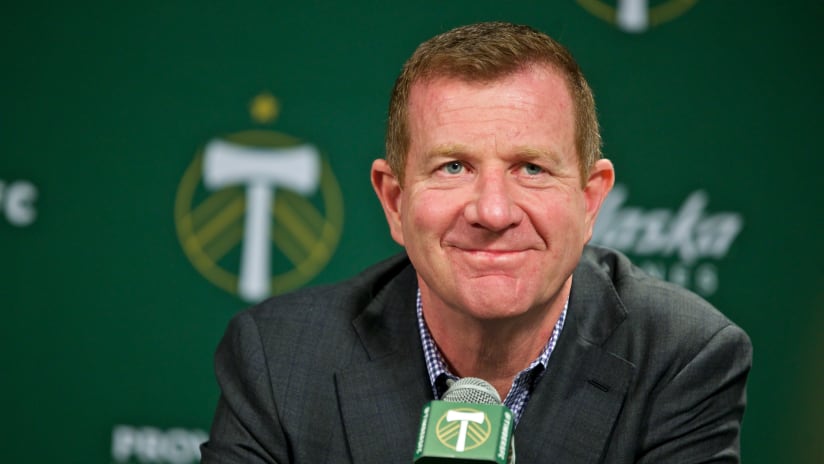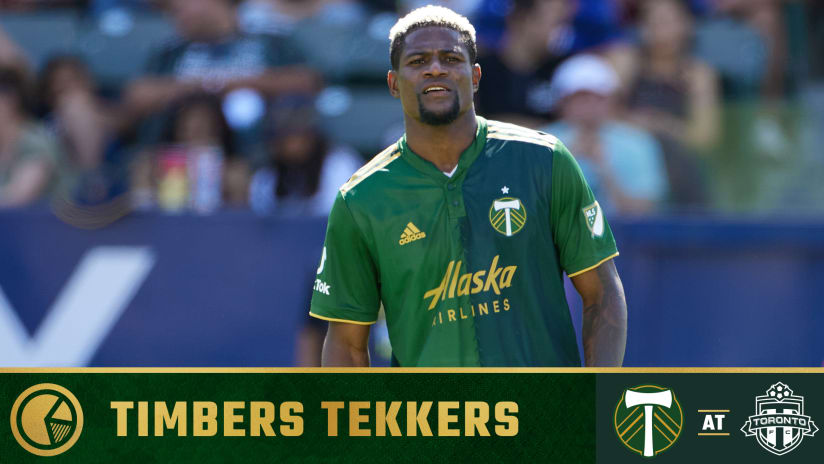His appearance via Zoom – on a video conference call, as opposed to something in person – was the first sign of our moment. His hair cut was the second.
Speaking to the media for the first time since the COVID-19 precautions set in, Gavin Wilkinson featured a hair cut to within what appeared to be one-eighth of an inch of his scalp. It may have been the first time in the MLS era that the Portland Timbers and Thorns FC’s President of Soccer sported a style too short to part.
“I found some hair clippers from my playing days, brought them out of retirement,” he quipped before conceding his 16-year-old son, Kienan, had the honors.
It wasn’t long into his call before matters shifted closer to the soccer field. In his half-hour with local and national media, Wilkinson covered topics from the three leagues most relevant to his club – Major League Soccer, the National Women’s Soccer League, and the United Soccer League – as well the changing landscape of the game, globally.
“This will reset the transfer market in every way possible, in my opinion,” Wilkinson said of the world’s pause in sports. “If you’re in Austin and you’re looking to come into [MLS], now is a great, great time to be looking at player acquisition and have the same resources as an expansion team two years ago or a year ago, where the market was drastically inflated.”
That’s soccer’s big picture right now, though it’s a level which, while interesting, is still removed from most fans’ primary concerns. When can games begin, is a more common query. Will they be on TV, or when will we able to go?
- #Statman Stumpers:How well do you know the team path of Timbers players?
Like the rest of the sports world, Wilkinson didn’t offer any answers to those questions, though he did concede, “I suppose I’m in the loop as much as most, minus the ownership.” Where those loops seemed to lead him, though, was a first step of sorts.
“We’re starting to look at individualized return to play,” he said, referring to players’ ability to get back to their training centers. Since the middle of March, those training centers have been closed, with only athletes needing medical treatment or physical therapy allowed in those buildings.
“Obviously, [returning to training is] relative to local governments, [and the Centers for Disease Control guidelines],” he said. “It’s also relative to what the stay at home order is. There are very strong guidelines put in place, that MLS has in place, and we’re looking to get approval. That should come out in the near future.”
To this point, players have been training at their homes, with exercise equipment taken from gyms at Providence Park and the Timbers’ Beaverton training center helping athletes meet their short-term needs. “Looking at our compliance for their at-home workouts, it’s been unbelievable, Wilkinson said. “The commitment that they’re showing to the organization, it’s resounding in every way. It’s leading everyone to work a little bit harder.”
According to Wilkinson, the processes around athletes’ “return to play” are “different” in MLS versus the NWSL. While MLS may be crafting returns “relative to local governments,” “NWSL is looking to paint everyone with one brush,” he said, explaining, “teams will be allowed to return once all the protocols are signed off on, once their stay at home order has been removed.”
Where the two outlooks come together, though, is what “individualized” training would look like when players return.
- PTFC Stay at Home Guide:Stories, activities, videos and more
“I think it will be … very much individualized,” he described, “where you’re still adhering to social distancing, where it’s pretty much there’s one area of the field that you have, a large area of the field, and a certain number of players can be in their own space during that time period.
“There’s zero crossover. Everything you can imagine should be adhered to will be.”
Implicitly, it highlights how early the leagues are in their process. On the MLS side, Wilkinson outlined a number of committees dealing with their new world’s issues, with topics ranging from youth development to competition format and rescheduling of games. “It’s chaos in a controlled fashion, in many ways,” he said of his days, ones which involve almost all of the league’s committees. “This morning started with a 7 a.m. Zoom call with MLS. Every day, it’s a minimum 7:30, 8:00 a.m. Zoom call.”
There needs to be a new schedule, but that can only happen when a return date can be set. And that is impacted by how, exactly, teams can safely face each other, all of which is based on returning to training, and starting up what will essentially be a second preseason.
“How long that preseason is will be dictated by each environment,” Wilkinson explained. “That’s one of the moving targets that we have to work with. Our staff has looked at a five-week preseason, a four-week preseason. How much work can we put in? How do we get all the physical data back? There are all these layers we have to work through, and it’s pretty interesting.”
Interesting and, ultimately, a source of hope. Though Wilkinson frequently paused to remind his audience that, amid his notes of optimism, his teams were cognizant of their stay-at-home world, the Timbers and Thorns’ version of that world now includes a very modest light at the end of their tunnel. No longer are Wilkinson’s teams engaging a what if as it concerns returning to the field. Games are still a ways off, but the possibility of players getting on a field and coaches interacting with them is a reality being discussed.
“For us, individualized training sessions, if we can get to that, that [is a] first step as far as optimism,” he said, “getting back to small groups and then team trainings, in order to play games.”
There was no mention of when games can start, nor was there an exact date for when players can return to their facilities. But the possibility is out there, now. The subtext of Wilkinson’s message: there may be a cause of “optimism,” soon. At least within the sports world, we may soon see one small, modest step forward.












